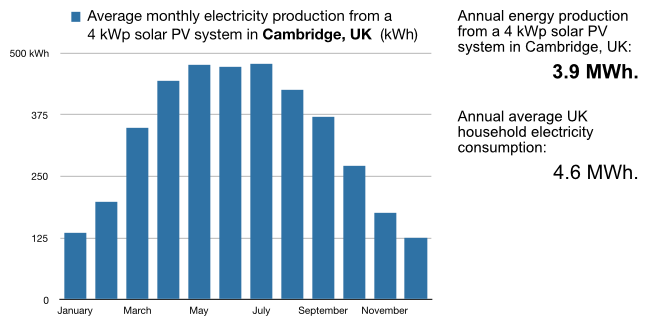it varies with locality depending on the average sunlight.

the above chart is showing above your figure but in eastern England, rainfall is about 1/3 what it is in the west country (for example) and that -assuming prevailing SW winds- presumably means less cloud, and/or thinner cloud than some other parts of the country too. So more solar output. Even quite small hills can affect weather locally too, and with it PV output.
The above chart is typical (for the UK) in that the six months in the middle of the year contribute about 2/3rds of the annual total output.
Another thing that makes a big difference is how clean the panels are kept. Some shed dirt better than others do, but in every 'solar farm' it is economic (or essential) to clean the panels on a regular basis.

shows how the angle of the panel is expected to alter its output

shows that sunshine makes about 2/3rds of the power, even though it is sunny only a fraction of the time.
cheers